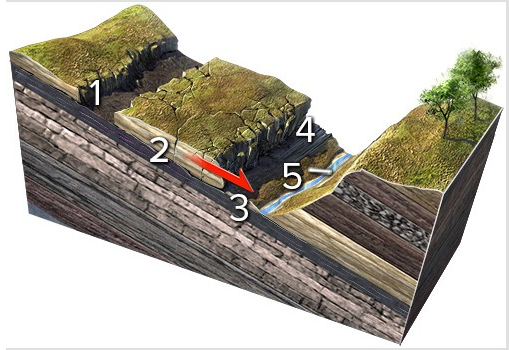Why are seasonal changes less noticeable near the equator than at mid-latitudes?
What will be an ideal response?
Because the equatorial region receives fairly constant high insolation and has consistent daylength throughout the year, there are little seasonal variations; insolation varies throughout the year (as does daylength), there are greater season variations.
You might also like to view...
Which numbered feature on this figure is critical to enable a rock slide to start?

A) 1, a linear or curved scar marking where the slide pulled away from the hill
B) 2, small fractures within the sliding block
C) 3, layers, fractures, or some other discontinuity inclined downslope
D) 4, the front of the slide, where it overruns the land surface
E) 5, a valley or other open space in front of the slide
Which is a characteristic of thermoclines?
a. Tropical thermoclines are shallower than those at higher latitudes. b. Thermoclines tend to be identical in form. c. Polar waters tend to lack thermoclines. d. Thermoclines are more pronounced in the high latitudes. e. Thermoclines are not affected by seasons.
Lakes are an important reservoir of continental freshwater. Indicate whether the statement is true or false
The large ocean that existed ~220 million years ago, forming about 60% of the Earth's surface was known as ________.
A. Rodinia B. Panthalassa C. Pangea D. Gondwanaland